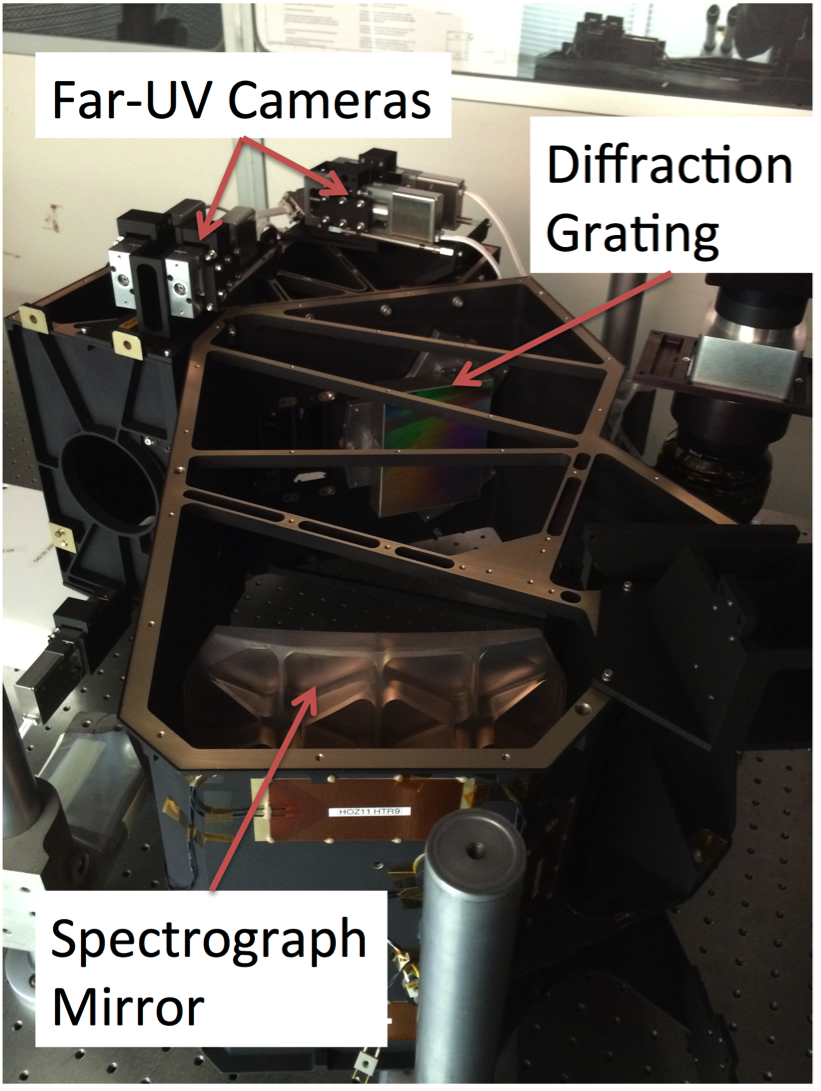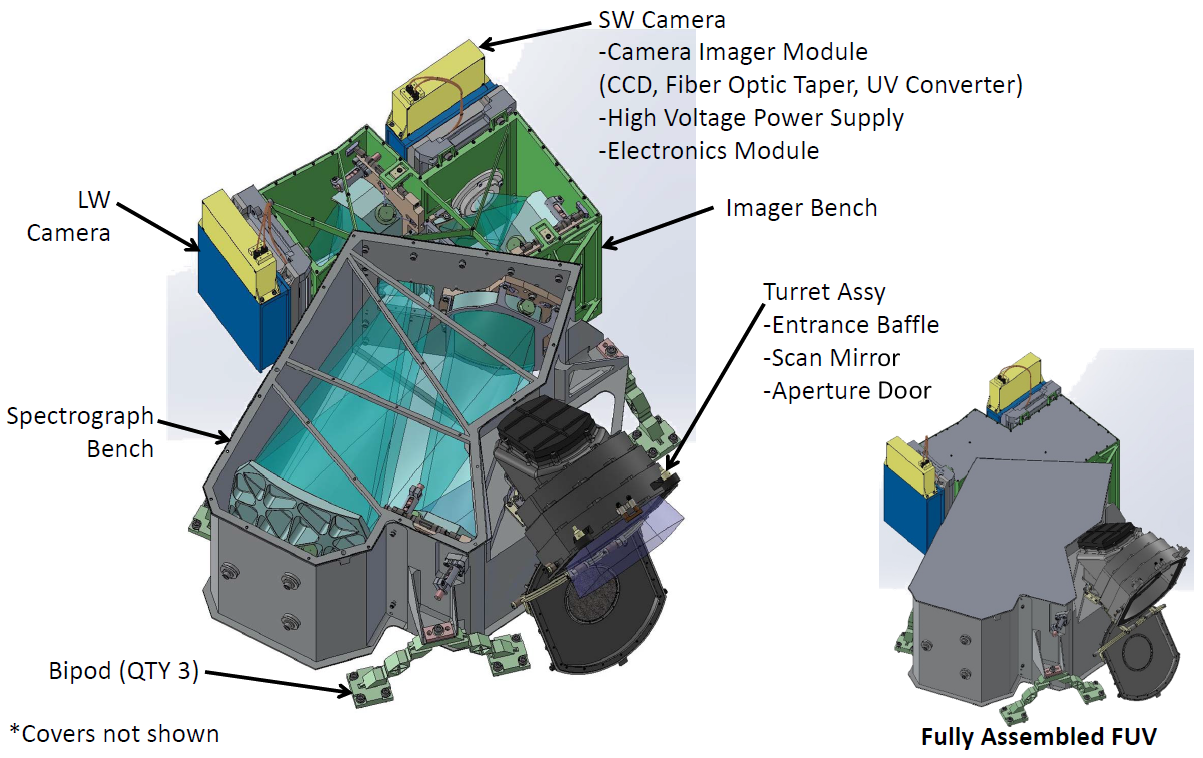There are 4 major pieces of the FUV instrument: the turret, the spectrograph, and the ultraviolet cameras.

FUV Turret
The Turret:
Light enters the FUV instrument through the turret. Just like a periscope on a submarine, this turret can turn, allowing the instrument to point along the line of the Earth’s magnetic field. A door covers the turret to keep the inside of the instrument clean prior to launch, and opens once ICON is in space.
The Spectrograph:
The FUV instrument makes images in 2 different colors in the far ultraviolet range. At these wavelengths, simple filters that allow only 1 color of light to pass through cannot be made. The ICON FUV instrument solves this by using a Czerny-Turner spectrograph as a type of filter, separating the wavelengths around 135.6 nm and 157 nm from the rest of the spectrum. The spectrograph forms the heart of the instrument, and consists of 2 mirrors and a diffraction grating (see Figure 3). It is this diffraction grating that allows the light at different wavelengths to be separated out.
The Ultraviolet Cameras:
The 2 color images are detected using a pair of cameras that are sensitive at far ultraviolet wavelengths. These consist of a UV converter, which changes UV photons into visible photos, much the same way that a night-vision camera changes infrared into visible. The visible light produced from this UV converter is then detected using a sensitive CCD detector. The complete layout of these cameras is shown below.

FUV Spectrograph.

FUV Spectrograph.